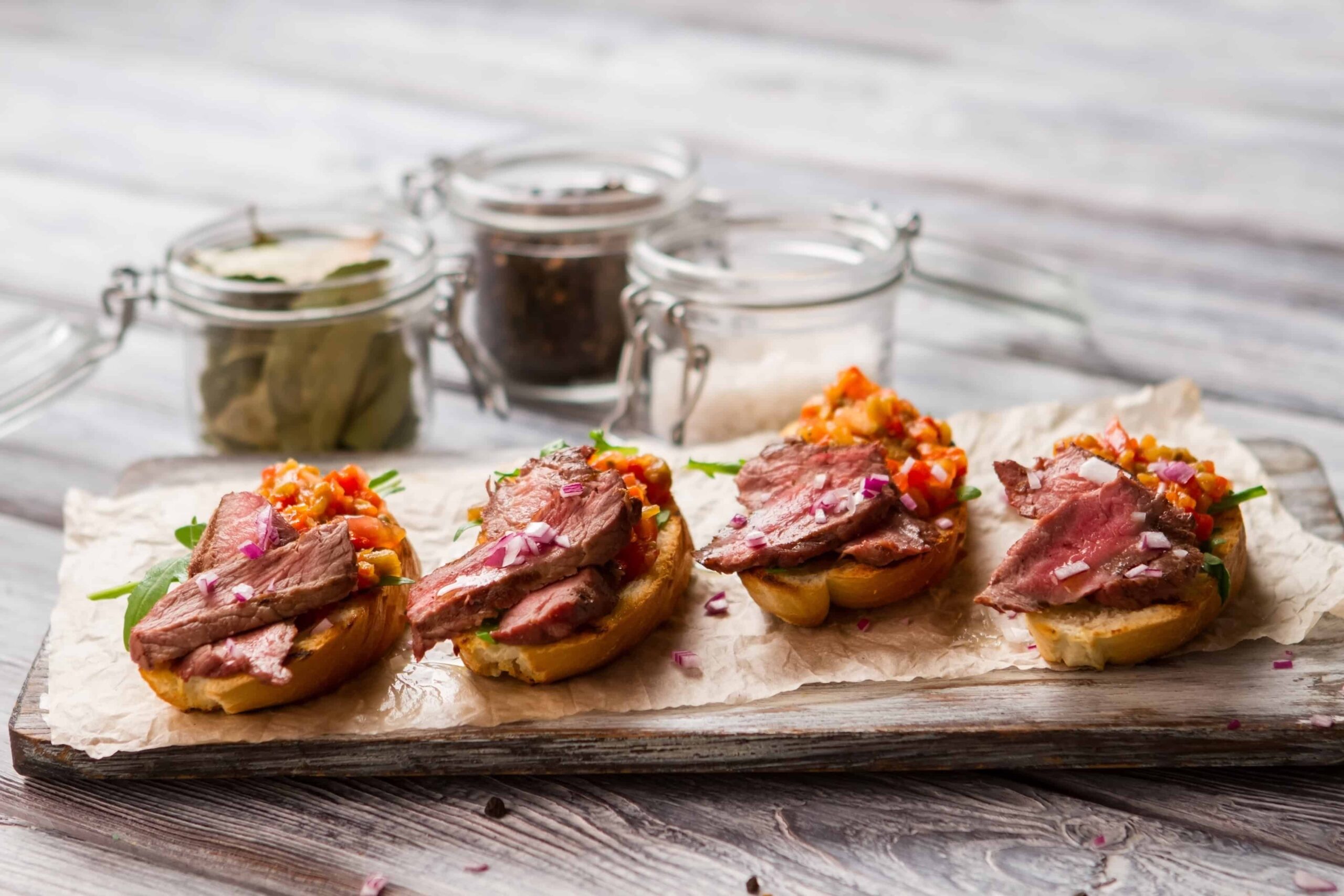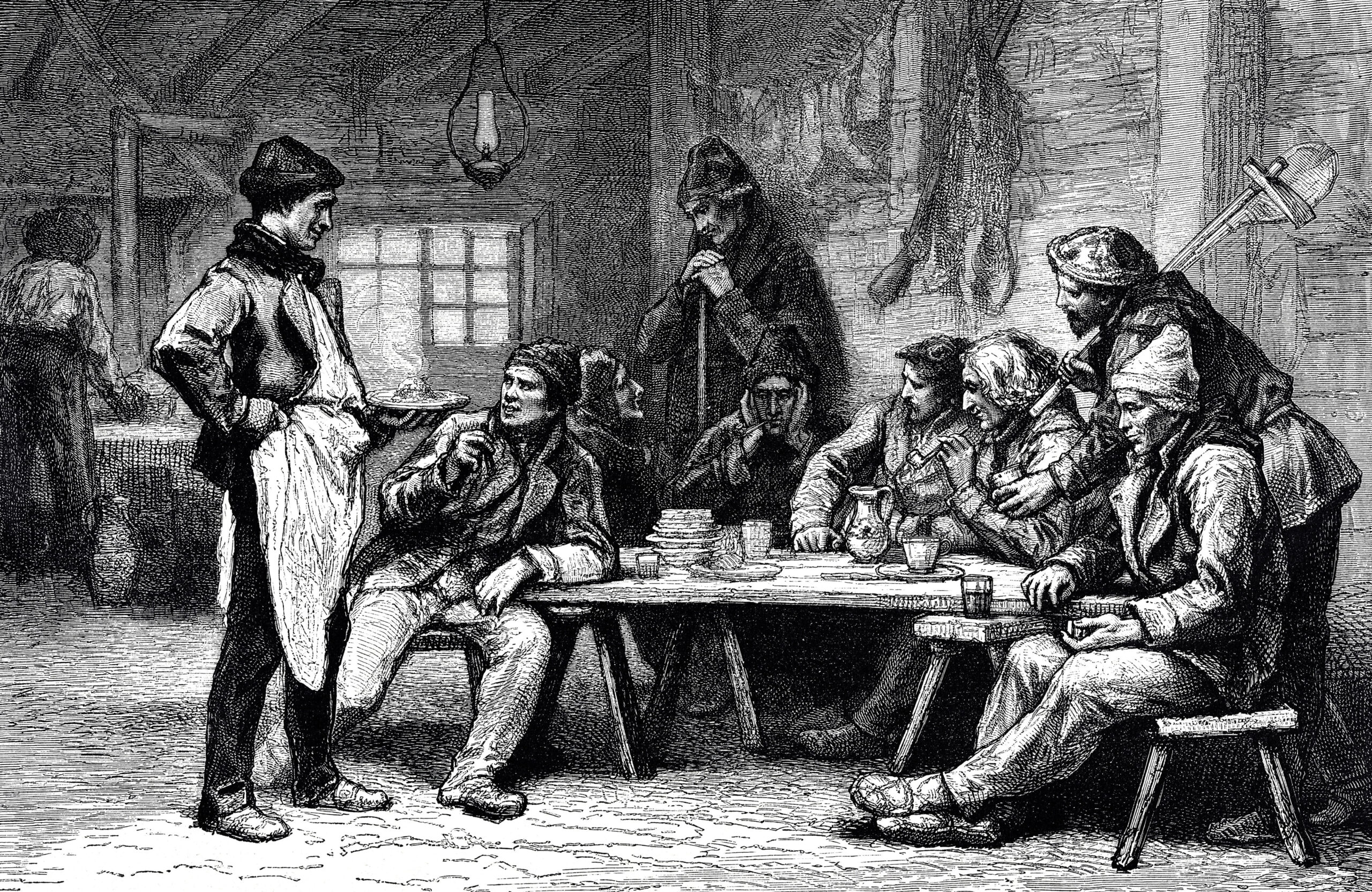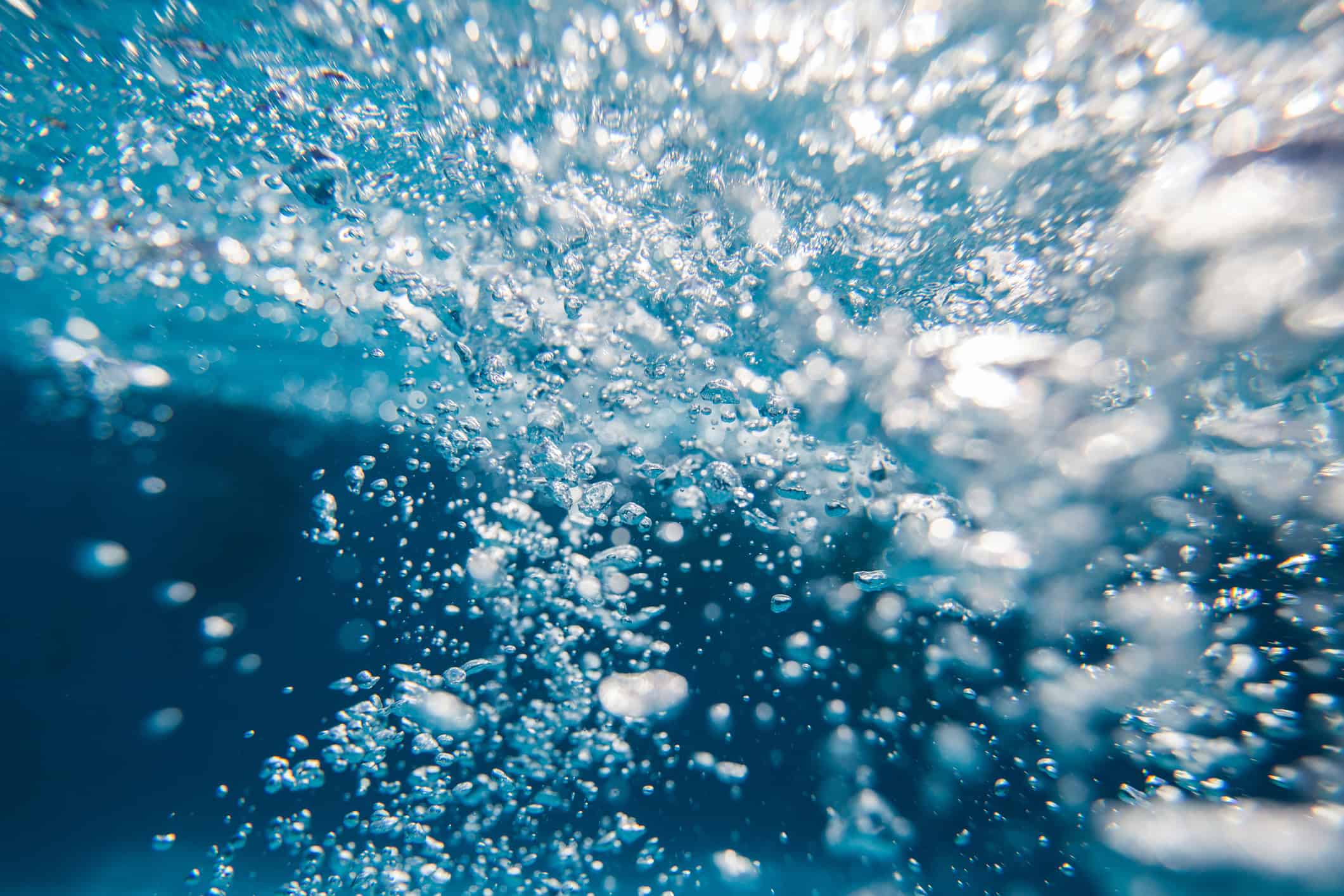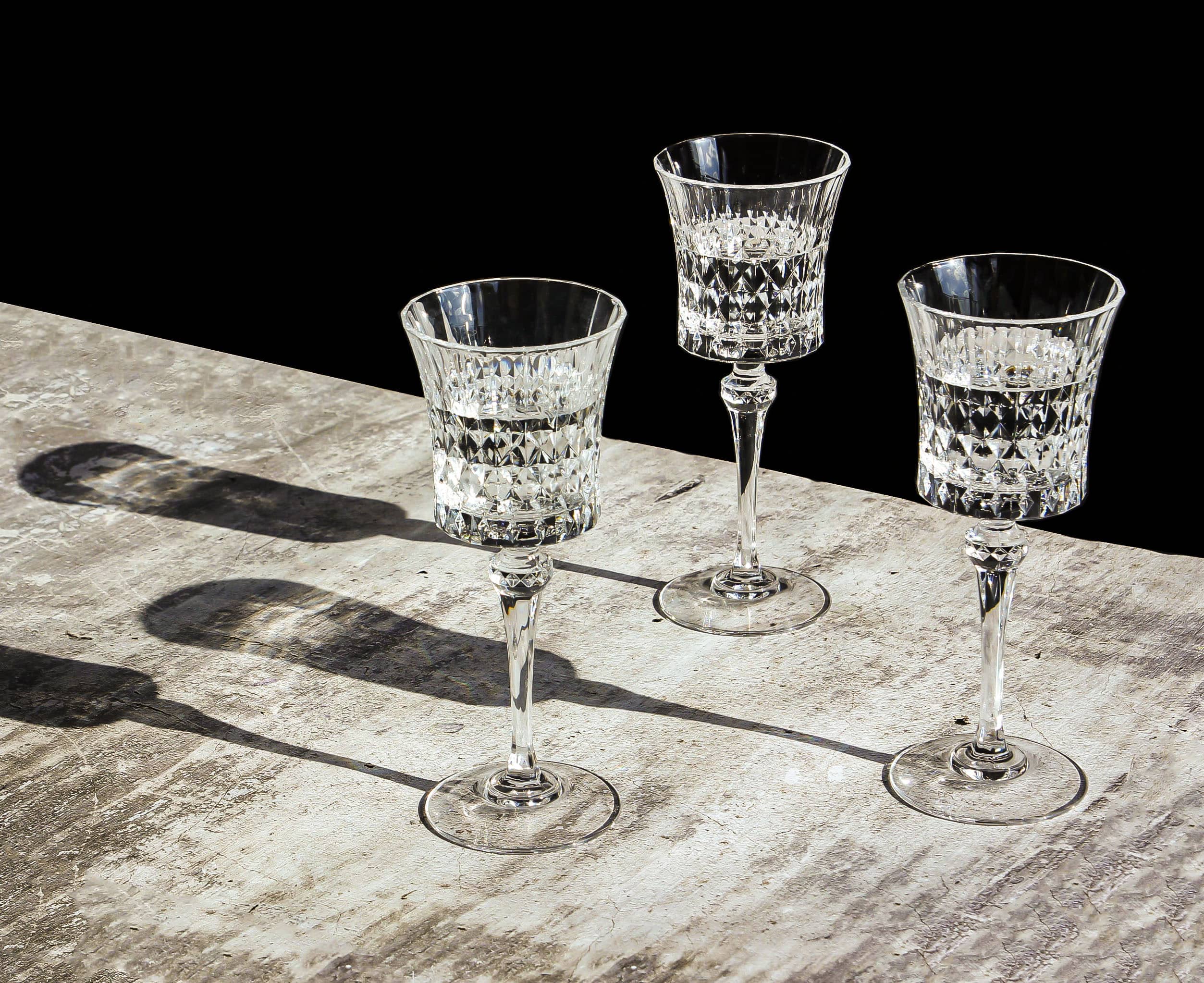Comparing vodka and gin is not just a matter of taste. For professional bartenders, mixologists and experienced alcohol connoisseurs, it is important to understand the subtleties of the composition, production technology and culinary usage of each drink. Despite their similar appearance, these spirits have completely different histories, aromatic profiles and functions in cocktails.
This article provides a structured overview of the differences between these two classics, from the origin of the ingredients to the choice of drink for a specific recipe. We take a detailed look at the nuances to give you a complete picture of vodka and gin comparison, with examples and practical tips.
What Is Vodka?
Vodka is an alcoholic beverage that has gained worldwide popularity thanks to its versatility, purity and ability to blend harmoniously with a variety of ingredients. Today, it is used in both classic mixes and modern signature cocktails.
Traditional ingredients
Traditionally, cereals such as wheat, rye, barley or corn are used to make vodka. In some countries, potatoes or grapes are added. The main thing is a source of starch or sugar that can be fermented. The quality of the raw materials determines the neutral taste that producers strive for in accordance with premium Vodka standards.
Distillation process
Vodka production involves fermenting raw materials, distilling them to a high level of purity, and diluting them to drinking strength. In the premium segment, the product undergoes several stages of filtration — through charcoal, silver, or quartz. It allows for a smooth taste, which is especially important when choosing vodka or gin for cocktails.
Flavour profile
Unlike gin, vodka has a minimal taste and aroma. This makes it an ideal base for mixes where the emphasis is on additional ingredients. At the same time, premium varieties may contain notes of grain, a mineral structure or a slight sweetness. Exactly this neutrality is often considered an advantage when it comes to vodka vs gin in recipes.
What Is Gin?
Gin is a distilled beverage based on neutral alcohol with a mandatory predominance of juniper berries. This component is what determines the characteristic tartness and aromatic complexity that give this alcohol a unique niche in mixology.
Key botanicals
In addition to juniper, botanicals such as roots, peel, spices, herbs and flowers are added to gin. The most common botanicals are coriander, angelica, cassia, cinnamon, lemon peel and violet. All these ingredients create a complex bouquet of tastes, which is the main answer to the question – what is gin made from vs vodka.
How it’s made
The gin production process begins with neutral alcohol, usually grain-based. It is distilled again together with natural plant ingredients in a pot still or using steam infusion. Juniper must be the dominant ingredient. The result is an aromatic spirit, ready to be diluted to desired alcohol strength and bottled.
Popular types of gin
The most common variants of gin include:
– London Dry Gin is a classic gin with a dry taste and a pronounced juniper aroma. No sugar is added after distillation, making the drink as “pure” and dry as possible.
– Plymouth Gin is produced exclusively in Plymouth, England. It’s known for its smoother, more harmonious taste with light earthy notes.
– Old Tom Gin — sweeter than London Dry Gin, ideal for classic cocktails that require a smoother profile.
– Genever — a traditional gin from the Netherlands, has a pronounced malty taste and a dense texture. It is considered the ancestor of modern gin.
– New Western Gin — a modern style in which juniper does not dominate. It allows other botanicals to come to the fore, creating unusual taste combinations.
This stylistic diversity demonstrates how is gin different from vodka: gin offers a deep aromatic palette that defines its character in mixology.
Vodka vs Gin – What’s the Real Difference?
Although both drinks are clear distillates, the difference between them lies in the raw materials, production, aroma and culinary use. A detailed vodka and gin comparison allows you to better understand why bartenders choose one product or another depending on the task at hand.
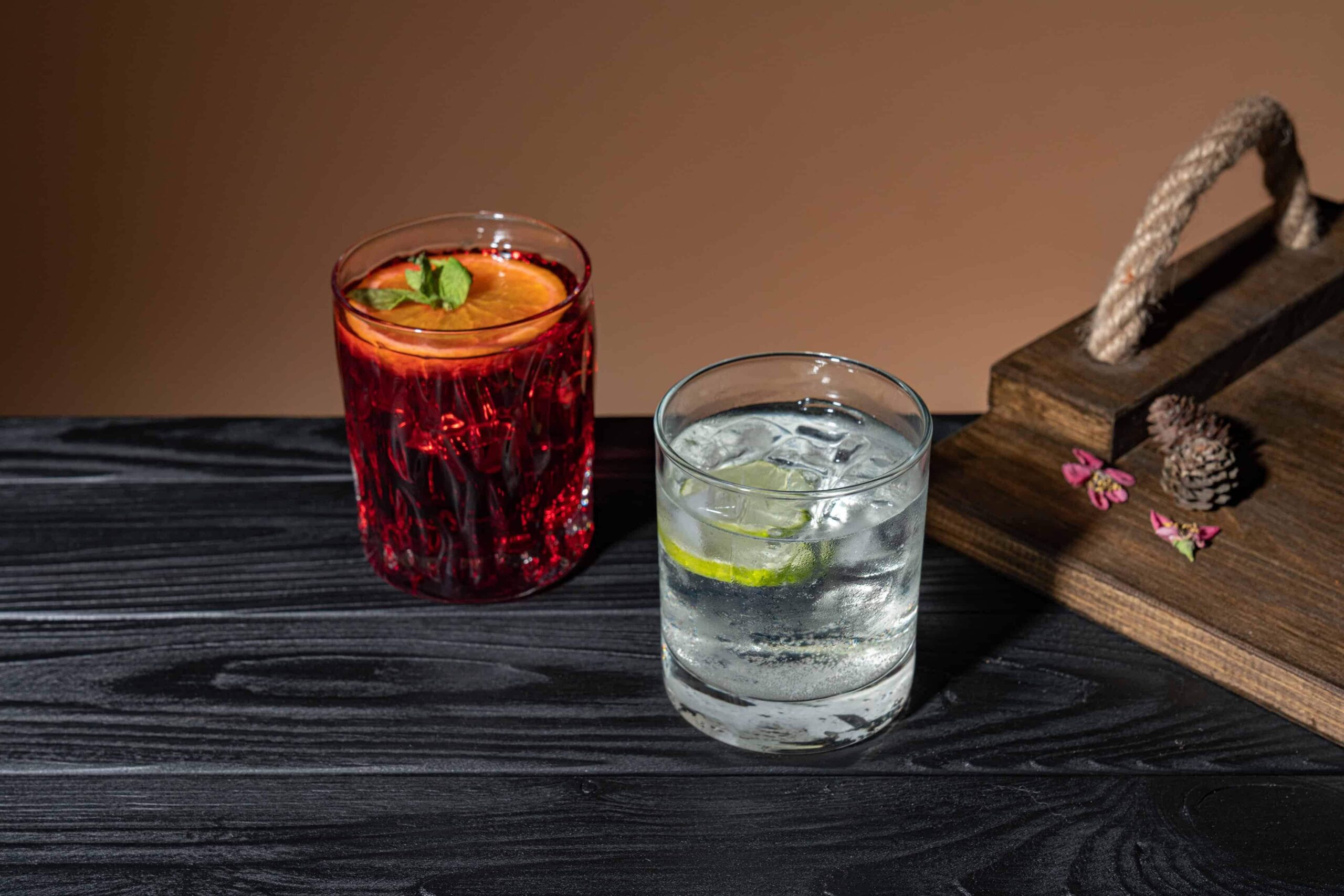
Ingredients and production methods
Difference in ingredients gin vs vodka lies in the philosophy behind the creation of the drinks. Gin is made from neutral alcohol, which is distilled repeatedly with aromatic plants such as juniper, coriander, citrus peel and roots. This process creates a multi-layered bouquet that becomes the hallmark of each brand.
Vodka, on the other hand, can be made from any raw material containing sugar or starch — grain, potatoes, even grapes. After distillation, the liquid undergoes deep purification and filtration to leave only a soft, almost imperceptible taste.
Alcohol content comparison
The level of alcohol content vodka vs gin is usually similar: both drinks have an average volatile alcohol content of 40%. However, there are differences in the permissible range.
For gin, it is mainly 37.5–57%, depending on the type and recipe. For vodka, the range is narrower — from 37% to 50%. In the premium segment, such as Nemiroff, the classic level of 40% is often maintained as the optimal balance between richness and smoothness.
Taste and aroma differences
The taste difference vodka and gin is one of the key criteria for choosing one over the other. In the first case, we are talking about a mild, neutral taste that does not overwhelm other ingredients, while in the second case, we are talking about distinct juniper, spicy or citrus notes that immediately set the tone for the mix.
The aroma is also fundamentally different. Vodka has virtually no distinct smell — only slight grain or alcohol nuances. Gin, on the other hand, reveals a complex composition of botanical ingredients, from cinnamon and cardamom to citrus zest and lavender notes.
That is why the first option is valued for its universality, and the second for its depth and variety.
Health considerations
Although the taste profiles are significantly different, both drinks are similar in terms of calorie content. The question – is vodka or gin healthier has no clear answer, as both products are alcohol, which is harmful to health when abused. Vodka usually has a neutral aroma, which may appeal to those who avoid strong additives. Gin, on the other hand, contains plant extracts — such as juniper or citrus peel — which are sometimes attributed with additional properties.
Excessive alcohol consumption is harmful to your health. Please drink responsibly.
Choosing the Right Spirit for Your Cocktail
The right base is the key to a balanced cocktail. The choice between vodka or gin for cocktails depends on the purpose, serving style and desired taste profile. Both drinks offer a wide range of possibilities, but each reveals itself in its own way.
When to use vodka
Vodka is the best choice when you need a neutral background that does not overwhelm other ingredients. It goes well with fruit, juices, liqueurs and even coffee. In cocktails such as Espresso Martini or Mule, it is pure grain alcohol that gives the structure integrity without unnecessary aroma. Thanks to its universality, vodka allows you to create both classic and original mixes with varying degrees of intensity.
When to choose gin
Gin is the choice for connoisseurs of distinctive tastes. Its herbal and spicy palette is ideal for combining with tonic, citrus fruits, fresh herbs or spices. This option is chosen when you want to add character or bitter notes to a cocktail. Gin works well in classic combinations that do not require many ingredients, but reveal the depth of the base spirit.

Signature cocktails
Cocktails are not just a combination of ingredients, but a way to showcase the character of the chosen spirit. In the context of vodka or gin for cocktails, it is signature mixes that best reveal the essence of each drink — its structure, balance of aromas and depth of taste.
Vodka mixes:
– Vodka Martini. Nemiroff De Luxe 60 ml, dry white vermouth 10 ml, Lillet Blanc aperitif 10 ml, Orange Bitter 5 ml, grapefruit zest 1 ml. It is a classic combination with a distinct citrus accent and slight bitterness.
– Honey Pepper Mary. Nemiroff De Luxe Honey Pepper 50 ml, tomato juice 150 ml, Worcestershire sauce 10 ml, fresh lemon juice 10 ml, honey syrup 10 ml, Tabasco 5 ml, smoked salt and pepper. It’s a richly flavoured mix inspired by the classic Bloody Mary, but with a spicy and smooth aftertaste.
– Double Cosmo. Nemiroff Bold Orange 30 ml, Nemiroff Wild Cranberry 30 ml, coconut water 30 ml, sugar syrup 10 ml, fresh lemon juice 10 ml. It is a light berry and citrus mix with a bright sourness and smooth texture.
Gin-based cocktails:
– Gin & Tonic. It is one of the most famous bar drinks, based on the contrast between the juniper character and the freshness of tonic. 50 ml gin, 100 ml tonic, a slice of lime.
– Negroni. It is a drink with a bitter citrus taste and rich depth that illustrates the complexity of its composition. 30 ml gin, 30 ml red vermouth, 30 ml aperitif (e.g. Campari), orange zest.
– Tom Collins. It is refined, with a slight sourness and refreshing fizz drink, this is a classic that never goes out of style. Gin 45 ml, lemon juice 30 ml, sugar syrup 15 ml, soda water 60–90 ml.
You can find more combinations in the Nemiroff Cocktails selection, which includes both basic and signature options with a modern twist.
Final Thoughts: Gin or Vodka?
The review of vodka vs gin is an analysis of the taste properties, texture and role of ingredients in cocktail structure. Vodka provides a neutral base that does not distract from other components. Gin, on the other hand, forms a distinct aromatic framework.
What is the difference between gin and vodka – the answer to this question leads down to individual goals and recipe ideas. Each of these drinks serves a distinct function in mixology, and the choice between them depends on the serving style, ingredients, and desired taste effect.


